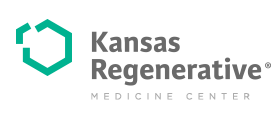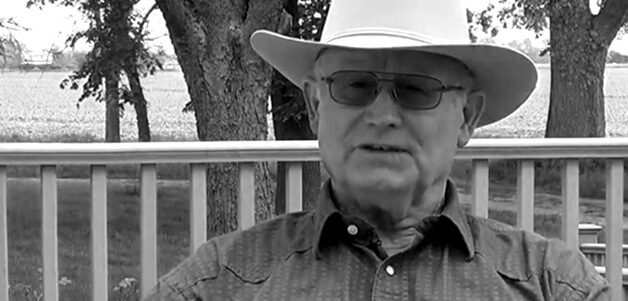Upcoming Seminar
Register NowIs everyone a candidate?
No. Only certain medical problems are currently being treated at KRMC. Check our list or fill out a candidate application form on the website. All patients need to be medically stable enough to have the treatment in our facility. There may be some exceptional conditions that may eventually be treated in hospitalized patients, but that remains for the future. Some patients may be declined due to the severity of their problem. Other patients may not have conditions appropriate to treat or may not be covered by our specialists or our protocols. A waiting list or outside referral (if we know of someone else treating such a problem) might be applicable in such cases.
Review the video: https://kansasrmc.com/stem-cell-treatment-are-you-a-good-candidate
Why do patients request stem cell treatment?
Many have been told that they require surgery or other risky treatments for their ailments and are looking for non-invasive options. Some have heard about the compelling testimonials about stem cells in the literature and on various websites. Many have read about the results of stem cell treatments in animal models and in humans. We give a choice to those informed patients who seek modern regenerative therapy but desire convenience, quality, and affordability. We fill a need for those patients who have been told that they have to travel to different countries and pay as much as one hundred thousand dollars for stem cell treatments offshore.
What is a stem cell?
A stem cell is basically any cell that can replicate and differentiate. This means the cell can not only multiply, it can turn into different types of tissues. There are different kinds of stem cells. Most people are familiar with or have heard the term “embryonic stem cell.” These are cells from the embryonic stage that have yet to differentiate – as such, they can change into any body part at all. These are then called “pluri-potential” cells. Because they are taken from unborn or unwanted embryos, there has been considerable controversy surrounding their use. Also, while they have been used in some areas of medicine – particularly, outside the United States – they have also been associated with occasional tumor (teratoma) formations. There is work being conducted by several companies to isolate particular lines of embryonic stem cells for future use.
Another kind of stem cell is the “adult stem cell.” This is a stem cell that already resides in one’s body within different tissues. In recent times, much work has been done isolating bone-marrow derived stem cells. These are also known as “mesenchymal stem cells” because they come from the mesodermal section of your body. They can differentiate into bone and cartilage, and probably all other mesodermal elements, such as fat, connective tissue, blood vessels, muscle and nerve tissue. As it turns out, fat is also loaded with mesenchymal stem cells. Today, we actually have tools that allow us to separate the stem cells from fat.
What are non-embryonic adult stem cells?
Adult (NonEmbryonic) Mesenchymal Stem Cells are undifferentiated cells that have the ability to replace dying cells and regenerate damaged tissue. These special cells seek out areas of injury, disease and destruction where they are capable of regenerating healthy cells and enabling a person’s natural healing processes to be accelerated. As we gain a deeper understanding of their medical function and apply this knowledge, we are realizing their enormous therapeutic potential to help the body heal itself. Adult stem cells have been used for a variety of medical treatments to repair and regenerate acute and chronically damaged tissues in humans and animals. The use of stem cells is not FDA approved for the treatment of any specific disease in the United States at this time and their use is therefore investigational. Many reputable international centers have been using stem cell therapy to treat various chronic degenerative conditions as diverse as severe neurological diseases, renal failure, erectile dysfunction, degenerative orthopedic problems, and even cardiac and pulmonary diseases to name a few. Adult stem cells appear to be particularly effective at repairing cartilage in degenerated joints.
How do adult stem cells heal?
These adult stem cells are known as “progenitor” cells. This means they remain dormant (do nothing) unless they witness some level of tissue injury. It’s the tissue injury that turns them on. So, when a person has a degenerative type problem, the stem cells tend to go to that area of need and stimulate the healing process. We’re still not sure if they simply change into the type of injured tissue needed for repair or if they send out signals that induces the repair by some other mechanism. Suffice it to say that there are multiple animal models and a plethora of human evidence that indicates these are significant reparative cells.
Do you use any embryonic stem cells?
No. Only adult mesenchymal stem cells are used. Embryonic stem cells are associated with ethical considerations as well as medical limitations.
Do you use stem cells from any other source?
No. Only a person’s own adult autologous cells are used. These are collected from each individual and deployed back into their own body. There is no risk of contamination or risk of introduction of mammalian DNA into the treatments.
Why don't you use amniotic stem cells?
We don't use amniotic stem cells due to unknown safety and efficacy as well as the ethical and moral controversy of donor stem cells. Amniotic cells have a high risk of rejection and risk of unknown donor origin which may result in transmission of potential pathogens.
Our technology
Kansas Regenerative Medicine Center (KRMC) uses adipose (fat) and bone marrow-derived stem cells, as well as blood-derived platelet-rich plasma, for deployment & clinical research. Early stem cell research has traditionally been associated with the controversial use of embryonic stem cells. The new focus is on non-embryonic adult mesenchymal stem cells which are found in a person’s own blood, bone marrow, and fat. Most stem cell treatment centers in the world are currently using stem cells derived from bone marrow.
Clinical success and favorable outcomes appear to be related directly to the quantity of stem cells deployed. Once stem cells are administered back into the patient, they have the potential to repair human tissue by forming new cells of mesenchymal origin, such as cartilage, bone, ligaments, tendons, nerve, fat, muscle, blood vessels, and certain internal organs. Stem cells’ ability to form cartilage and bone makes them potentially highly effective in the treatment of degenerative orthopedic conditions. Their ability to form new blood vessels and smooth muscle makes them potentially very useful in the treatment of Peyronies Disease and Impotence. Stem cells are used extensively in Europe and Asia to treat these conditions.
We have anecdotal and experimental evidence that stem cell therapy is effective in healing and regeneration. Stem cells seek out damaged tissues in order to repair the body naturally. The literature and internet is full of successful testimonials but we are still awaiting definitive studies demonstrating efficacy of stem cell therapy. Such data may take five or ten years to accumulate. In an effort to provide relief for patients suffering from certain degenerative diseases that have been resistant to common modalities of treatment, we are initiating pilot studies as experimental tests of treatment effectiveness.
Our treatments and research are patient funded and we have endeavored successfully to make it affordable. All of our sterile procedures are non-invasive and done under local anesthesia. Patients who are looking for non-surgical alternatives to their degenerative disorders can participate in our trials by filling out our treatment application to determine if they are candidates. KRMC is proud to be state of the art in the new field of Regenerative Medicine.
What are the tools of regenerative medicine?
Traditionally, we have used various medications and hormones to limit disease and help the body repair itself. For example, hormone replacement therapy has, in many cases, shown the ability to more optimally help the immune system and thus help us repair diseased or injured tissues. Genetic research is an evolving area where we will eventually learn and utilize more ways of specifically dealing with gene defects causing degenerative disease. Stem cell therapy is another rapidly evolving and exciting area that has already shown considerable promise in treating many degenerative conditions.
What areas do you treat?
We treat: Orthopedic; Osteoarthritis; Neck, Back, Shoulders, Knees, Hips, Elbows, Hands, Wrists, Feet, Ankles & Spine; Pain Management; Autoimmune; Neurological, Urological. Plans are currently being made for a number of other specialties.
What diseases and problems can be treated?
This will depend on the type of degenerative condition you have. A specialist will evaluate you and discuss whether you’re a potential candidate for stem cell therapy. If after you’ve been recommended for treatment, had an opportunity to understand the potential risks and benefits, and decided on your own that you would like to explore this avenue of treatment, then you can be considered for treatment. Of course, even though it’s a minimally invasive procedure, you will still need to be medically cleared for the procedure.
What is Regenerative Medicine?
Regenerative Medicine is the process of creating living, functional tissues to repair or replace tissue or organ function lost due to damage, or congenital defects. This field holds the promise of regenerating damaged tissues and organs in the body by stimulating previously irreparable organs to heal themselves. (Wikipedia)
Is our procedure FDA approved?
NO. However, our procedures fall under the category of physician’s practice of medicine, wherein the physician and patient are free to consider their chosen course of treatment. The FDA does have guidelines about treatment and manipulation of a patient’s own tissues. We meet these guidelines by providing same day treatment with the patient’s own cells that undergo very minimal manipulation and are inserted during the same procedure.
How do you obtain a person's stem cells?
Stem cells are collected and deployed during the same procedure. Our patients undergo a minimally-invasive liposuction type of harvesting or bone marrow aspiration procedure by one of our highly trained physicians in our specialized treatment facility. The collection procedure generally lasts 30 minutes and can be done under local anesthesia. Cells are then processed and are ready for deployment within 90 minutes.
How do you control sterility in the processing of the stem cells?
Stem cells are collected under sterile conditions using a special “closed system” technology so that the cells never come into contact with the environment throughout the entire process from removal to deployment. Sterile technique and antibiotics are also used to prevent infection.
Does KRMC make promises or claims associated with the treatment?
Along with our partners, we are pioneering the research and treatment of many diseases. All investigational data is being collected so that results will be published in peer-reviewed literature and ultimately used to promote the advancement of cellular-based regenerative medicine. All treatments are considered investigatory - therefore, though we have seen remarkable results, we make no claims or promises with our treatments.
Can stem cells treat cancer?
No . Many are confused by this because they have heard of cancer patients receiving “stem cell transplants.”. These patients had ablative bone marrow therapy and need stem cells to re-populate their blood and marrow. This is different from the stem cells we deploy to treat non-cancerous human diseases at KRMC.
Can stem cells cause cancer?
Adult mesenchymal stem cells are not known to cause cancer. Some patients have heard of stories of cancer caused by stem cells, but these are probably related to the use of embryonic cells (Not Adult Mesenchymal Cells). These embryonic tumors known as teratomas are rare but possible occurrences when embryonic cells are used.
Can you treat patients with cancer?
Stem cell therapy is thought to be safe and not affect dormant cancers. If someone has had cancer that was treated and is successfully now in remission, there is no reason to withhold stem cell deployment. In most cases, stem cells should not be used in patients with known active cancer.
Are there reports of autologous adipose-derived adult mesenchymal stem cells harming any humans or animals?
We know of no documented cases personally or in the literature where serious harm has resulted. All of our patients will be entered into a database to follow and report any adverse reactions. This information is vital to the development of stem cell science. There have been a few reports of serious complications from overseas and these are being thoroughly evaluated by epidemiologists to ascertain the facts. The International Stem Cell Society registry has over 1,000 cases currently registered and only 2% of the treatments were associated with any complications, none of which were considered “serious adverse events.”
Do you make any claims about what stem cell therapy can do?
No. Our aim is to make cell-based medicine available to patients who are interested and to provide ongoing research data under approved Institutional Review Board (IRB) validated studies. We will follow our stem cell treatment patients over their lifetimes. This will enable us to accumulate significant data about the various degenerative diseases we treat. Instead of providing simply anecdotal or testimonial information, our goal is to categorize the various conditions and follow the patient’s progress through various objective (e.g. x-ray evidence or video displays) and subjective (e.g. patient and/or doctor surveys) criteria. We are aware of a lot of stories about marked improvement of a variety of conditions, but we make no claims about the intended treatment. At some point, once adequate amounts of data are accumulated, it might be appropriate to submit the information to the FDA at which point an actual claim may be substantiated and recognized by the Agency. Still, these are your own cells and not “medicines” for sale. They are only being used in your own body. Most likely, no claim needs to be made; rather a statistical analysis of our findings would suffice to suggest whether treatments are truly and significantly effective. We also hope to submit our patient’s data to an approved International Registry (See ICMS Stem Cell Registry) further fostering large collections of data to help identify both positive and negative trends.
Are any biological agents added to the stem cells??
Our adipose derived stem cell harvesting and isolation technique yields extremely high numbers of stem cells. In reviewing outcomes data, treatment cell numbers appear to correlate with treatment success. Our cells are actually in a type of “soup” called Stromal Vascular Fraction SVF which is stem cells bathed in a rich mixture of natural growth factors (Not the same as human growth factor hormone which is only one type of growth factor). Some types of orthopedic and urologic diseases appear to respond better to stem cells that are super enriched with growth factors created by administering Platelet Rich Plasma to the patient. Autologous Platelet Rich Plasma is derived from a patient’s own blood drawn at the time of deployment. At KRMC we do not add any foreign substances or medications to the stem cells.
How are the cells deployed into a patient?
Depending on the type of treatment required, stem cells can be injected through veins, arteries, subcutaneously, or directly into joints or organs. All of these are considered minimally invasive methods of introducing the stem cells. Stem cells injected intravenously are known to “seek out and find” (see photo) areas of tissue damage and migrate to that location thus potentially providing regenerative healing. Intravenously injected stem cells have been shown to have the capability of crossing the “blood-brain barrier” to enter the central nervous system and they can be identified in the patient’s body many months after deployment. Note yellow arrow showing the stem cells concentrated in the patient’s hand where he had a Dupytren’s contracture (Dupuytren’s contracture is a hand deformity that causes the tissue beneath the surface of the hand to thicken and contract).
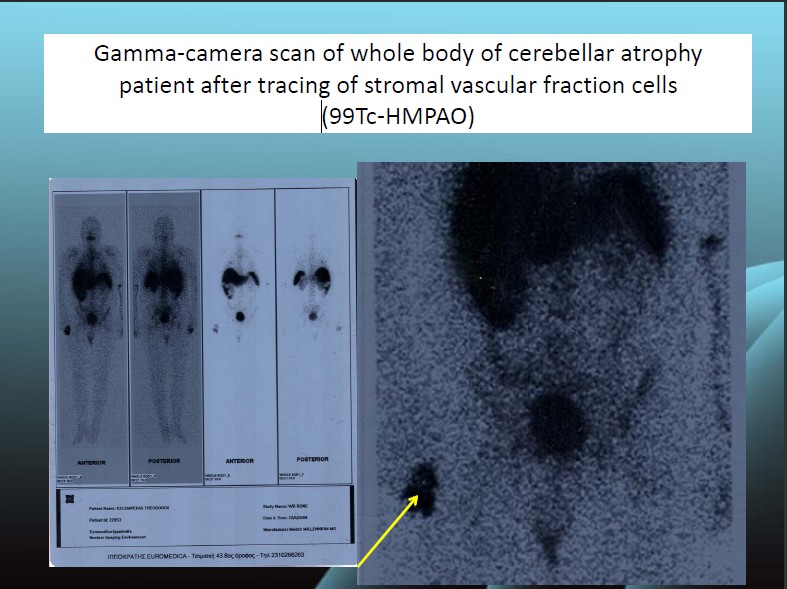
Can I be expected to improve after stem cell treatment at KRMC?
Different conditions are treated in different ways and there are different degrees of success. If the goal is regeneration of joint cartilage, one may not see expected results until several months after treatment. Some patients may not experience significant improvement and others may see dramatic regeneration of damaged tissue or resolution of disease. Many of the disorders and problems that the physicians at KRMC are treating represent pioneering work and there is a lack of data. FDA regulations prevent us from making any claims about expectations for success, however, if you are chosen for treatment, it will be explained that we believe stem cell therapy may be beneficial or in some cases that we are unsure and treatment would be considered investigational.
How long does it take to see improvement?
Stem cell therapy relies on the body’s own regenerative healing to occur. The regenerative process may take time, particularly with orthopedic patients, who may not see results for several months. In some diseases, more immediate responses are possible.
Are any patients automatically excluded?
Yes. Patients with uncontrolled cancer are excluded. If you have an active infection anywhere in your body you must be treated first. Severely ill patients may require special consideration. Also, anyone with a bleeding disorder or who takes blood thinning medications requires special evaluation before consideration for stem cells.
Who decides who is eligible?
The specialist seeing you at KRMC will make a determination based on your history and exam, studies, and current research findings. Any complex cases may be reviewed by our ethics advisory committee. Occasionally, we may seek opinions from thought leaders around the world
Do I have to participate in research to receive treatment?
No. Participation in any of our protocols is not mandatory and there are no incentives, financial or otherwise, to induce patients to enroll in our studies. However, KRMC is dedicated to clinical research for the development of stem cell science. We take an active role in cutting-edge clinical research in the new field of regenerative medicine. Research studies will be explained and privacy will be maintained. Formal future research studies will be regulated by an Institutional Review Board which is an authorized agency that promotes validity, transparency and protection of human study enrollees.
What is the cost of consultation and treatment?
Patients who are considered to be candidates based on information provided in the candidate application form will be invited for a consultation with one of our panel physicians. There is no charge for this consultation which includes office evaluation (but may also include physician’s evaluation of X-Rays, records, or telephonic consultations). Unfortunately, insurance generally will not cover the actual cost of stem cell treatment in most cases since stem cell therapy is still considered experimental. The cost varies depending on the disease state being treated and which type of stem cell deployment is required. To apply for medical financing, visit Bank of the Flint Hills at bankflinthills.com
What does the cost of the procedure Include?
Because of recent innovations in technology, KRMC is able to provide outpatient stem cell treatment at a fraction of the cost of that seen in many overseas clinics. The fee covers cell harvesting, cell preparation, and stem cell deployment which may include the use of advanced interventional radiology and fluoroscopy techniques. To apply online for medical financing, visit Bank of the Flint Hills at https://www.bankflinthills.com/personal/loans/start-the-loan-process.
How many injections are required for success?
Most patients, especially those with orthopedic conditions, require only one deployment. Certain types of degenerative conditions, particularly autoimmune disease, may respond best to a series of stem cell deployments. The number and necessity of any additional treatments would be decided on a case by case basis. Financial consideration is given in these instances.
Are You a Candidate?
Our research-based treatments use your own stem cells to accelerate your healing — without surgery.
Request an Introductory Patient Package
Receive an introductory patient package by email.
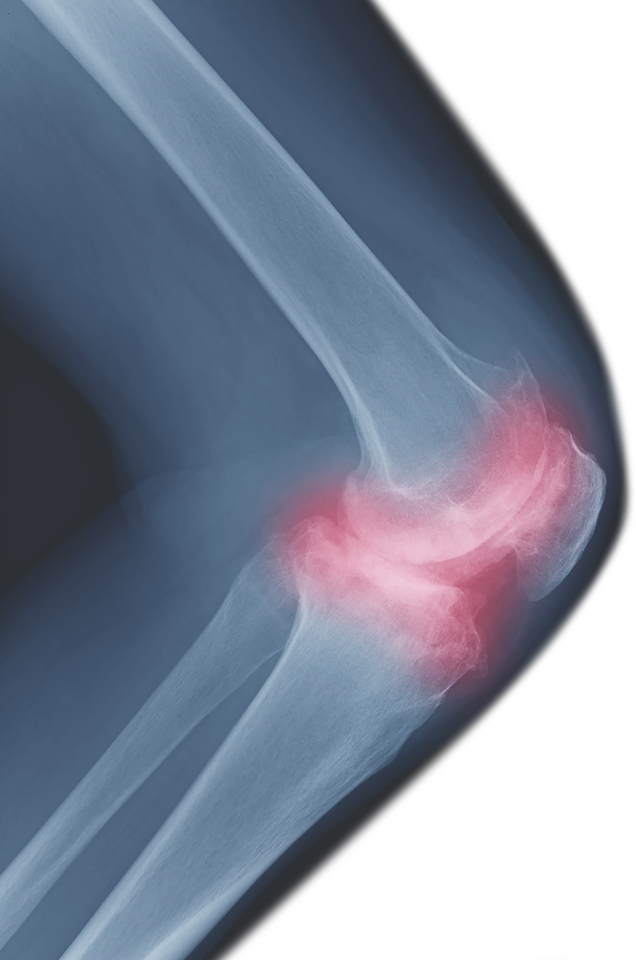
Register for An Upcoming Webinar
Use Your Own Cells to Treat Arthritis, Joint Injuries & Spine Pain
A stem cell discussion followed by Q & A.
Join Us!
for an upcoming webinar.
